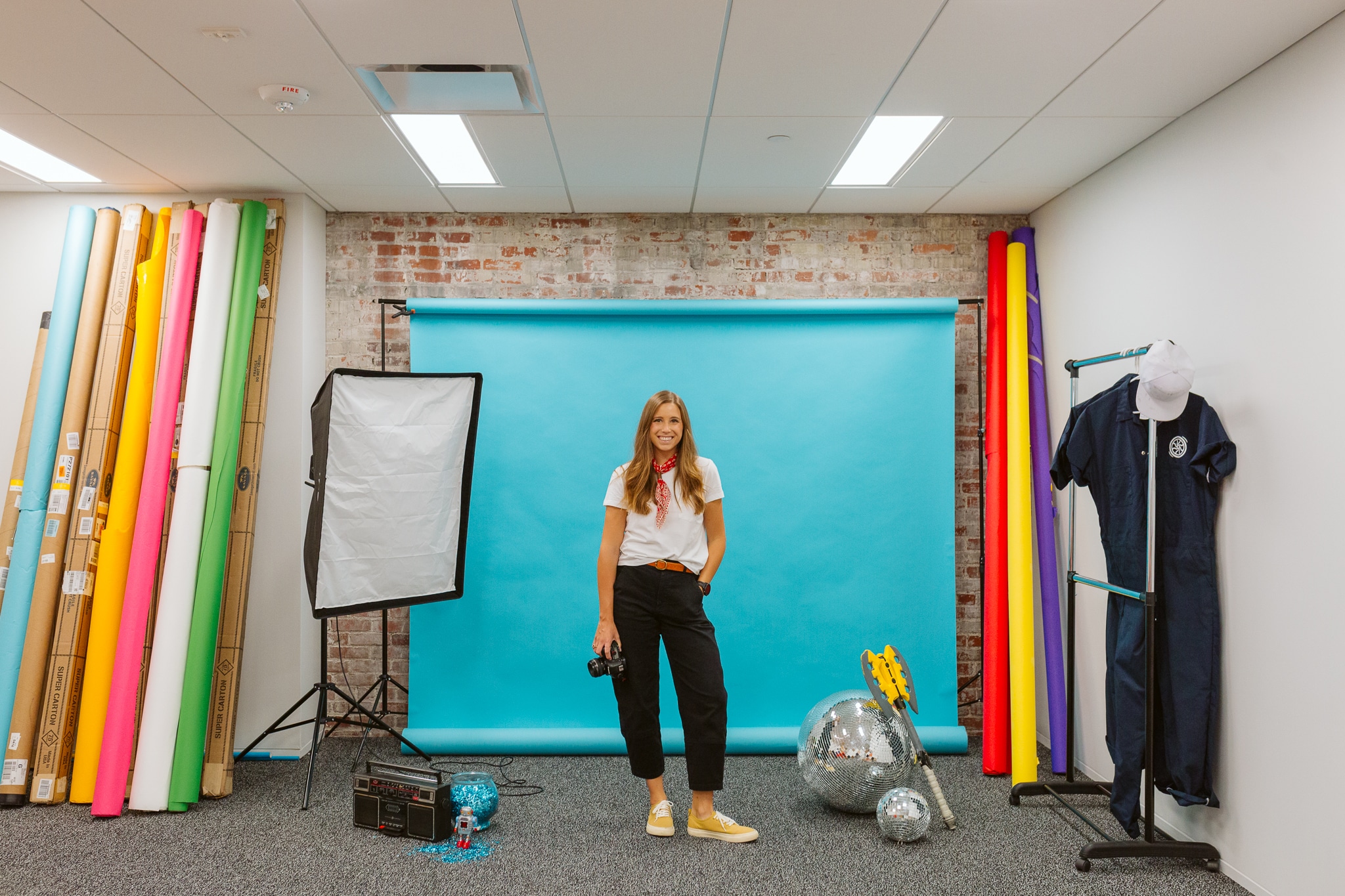
Here’s an interaction I run into often when discussing what I do for a living:
“You work full-time? Doing photography? For a tech company?!
“Yep!”
“So Flywheel has a full-time, in-house photographer? Why?”
After having this discussion more times than I could count, I thought it was time to sit down and explain how I went from a marketing intern to senior photographer at a WordPress hosting company, what my day-to-day looks like, and share a little bit of what I’ve learned along the way! Let’s dive in:
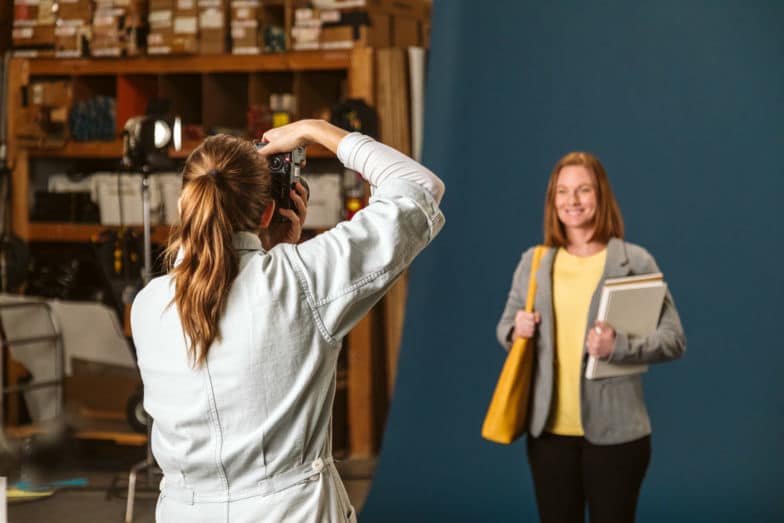
Just in case you weren’t familiar, web hosting at its core isn’t the most glamorous part of running a creative business. It’s literally where your website lives on the Internet, and all of the technical necessities that come with it. Moreover, hosting is oftentimes associated with headaches, technical mumbo jumbo, and endless problem-solving. Riveting, right?
But, not at Flywheel. Our well-designed products, thoughtfully curated campaigns, and ultimately, amazing people who build, sell, support, and market Flywheel is what makes us stand out from the typically mundane crowd. We have a deep understanding of what designers, agencies, and creatives need to run a fruitful and growing web design business, and have brought a new-found human-inspired presence to the web hosting community and market as a whole.
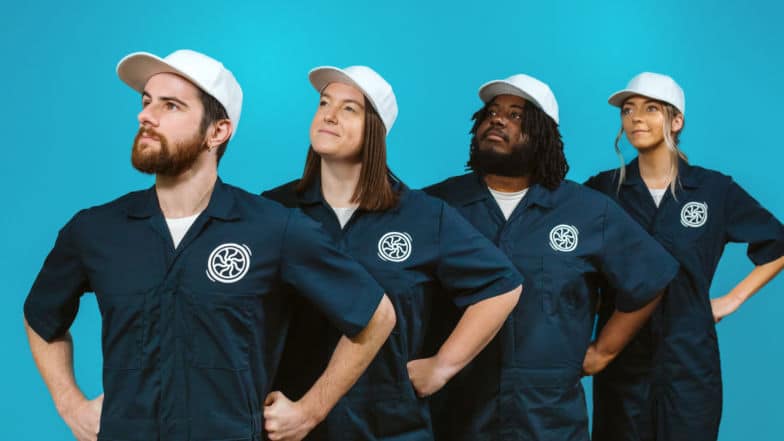
Flywheel aims to humanize hosting, and one way we do so is by showing the people behind the product. That’s where I come in. My job is to assist the marketing team (and the entire company!) in developing imagery to show Flywheel as a beautiful, dependable, professional, and premier humanized tech company.
So, what does my day-to-day look like? I like to think that I have two clients: the company as a whole, and the marketing team.
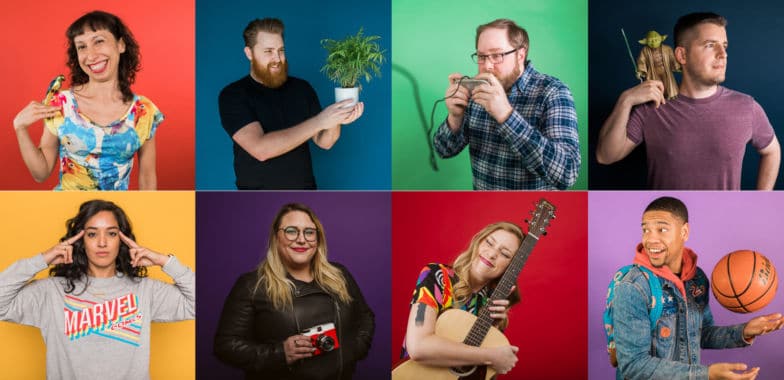
Having a tech company as a “client” has involved everything from documenting internal events like Perspective Day, to supplying and organizing a set of internal repositories of images used across the organization, to being the sole photographer allowed to shoot the biggest days in Flywheel history. I’ve been front and center during the unveiling of our new headquarters and captured the exciting day when we joined the WP Engine team. Through the imagery I capture, I’ve helped establish Flywheel’s employer brand as a beacon on a hill in Omaha, Nebraska and in the WordPress community.
When I’m not focusing on needs for the company, I’m shooting for the marketing team, which is where I spend the majority of my days. On any given week, I could bounce between shooting article-specific imagery for Layout posts, producing imagery for our Agency Partners Program campaign, or working with our social media specialist to create engaging, whimsical imagery for our followers.
Other elements of visual communication that fall under my umbrella of responsibilities are things like strategizing and brainstorming with the creative team on how to approach a creative-led product launch, storyboarding an animated launch video, and managing the pre-production logistics for a live-action feature campaign.
Visual communication is what bridges my work together, whether it’s for the company or the marketing team. I view photography as the vehicle and medium in which I do my best creative work for Flywheel, but storytelling is my full-time job!
After four years on the job, there’ve been countless things I’ve learned, realized, and garnered as best practices in this industry, both with and without a camera in hand. Here’s a short list of seven of my favorites:
1. Brands can be whimsical and trustworthy
Flywheel is a product company that, at its core, is trying to make it easier to run a web-based business, eliminate headaches for our customers, and ultimately keep our customers’ sites (and their clients’ sites) safe and secure. Though those aspects of Flywheel’s business are some of the most pivotal to garnering trust from our customers, we have a brand, voice, and approach to marketing that lends itself to whimsy. Can those two worlds collide and still be effective? Yep, they sure can. But it’s taken some practice.
A lesson I learned early on, and continue to be mindful of, is how to make words like trust, secure, professional, and reliable come alive within a creative set of brand guidelines that embraces whimsy, vibrancy, and a little fun. It’s not easy and I’ve definitely failed a few times, but as we combine photography with design and content, while keeping the target audience in mind, I’ve watched myself and the rest of the creative team truly embrace the ability for trustworthy products and a whimsical brand to work beautifully together.

2. You can do a lot with a little
When I first started at Flywheel, all I had access to shoot with was any available window light I could find. A year later, Flywheel expanded its space due to rapid growth, and that came with a room big enough for a studio. This little room soon became the place where I would spend hours of time learning how to use studio lighting. It’s where I’d invite Flywheelers down for their new hire photo shoots and capture the advertising imagery for some of our biggest campaigns, like Fly July and Black Flyday.
It wasn’t fancy or state of the art in any way, but I discovered that photographers really can do a lot with a little, as far as space and equipment are concerned. It’s been fun to challenge myself to be as creative and imaginative as possible with just what I have in front of me!
Note: With the unveiling of our new HQ in the Ashton Building, I now have the privilege to work out of an incredible photo studio built in the heart of our office, but I’ll always channel my scrappy roots that I learned early on in my career no matter where I’m shooting!
3. Being yourself helps others be themselves
Being yourself is imperative as a photographer. If I’m not doing conceptual photo work, then I’m capturing humans in either a lifestyle approach or in the studio. Either way, Flywheelers are not trained models, yet they take time out of their day to represent themselves and the company in our marketing materials so I can avoid the use of stock photography (more on that in a minute). So I try to lead with empathy and create a space where getting your photo taken isn’t intimidating, but rather an enjoyable experience!
The easiest way to do this? By simply being myself! It helps (and encourages) whoever it is in front of my camera to be themselves, as well. Authenticity, whether you feel it’s an overused buzzword or not, shows.
4. Convince your boss to ditch that stock photography subscription
In the realm of using imagery to enhance marketing materials, I’m sure we’re all very familiar with the use of stock photography. However, since I arrived on the job and expanded my responsibilities to shoot original photography for all channels, we have been stock photo free since 2017 (yes, anyone you see in photos or on our website, our blog, or our social channels are Flywheel employees!)
This is just another example about how Flywheel truly lives out its values, as our founders believed early on that “design matters” and that generating our own whimsical, intentional, human, and vibrant content would not only set us apart in the market, but speak to our target audiences (freelancers, designers, and agencies) best! I know it might seem easier to just pull a stock image here and there, but if you’re in the tech industry and are looking to make a big impact, replace Shutterstock with an actual photographer. Whether it’s full time or just a contracted freelancer, the difference will stand out substantially from the competition.
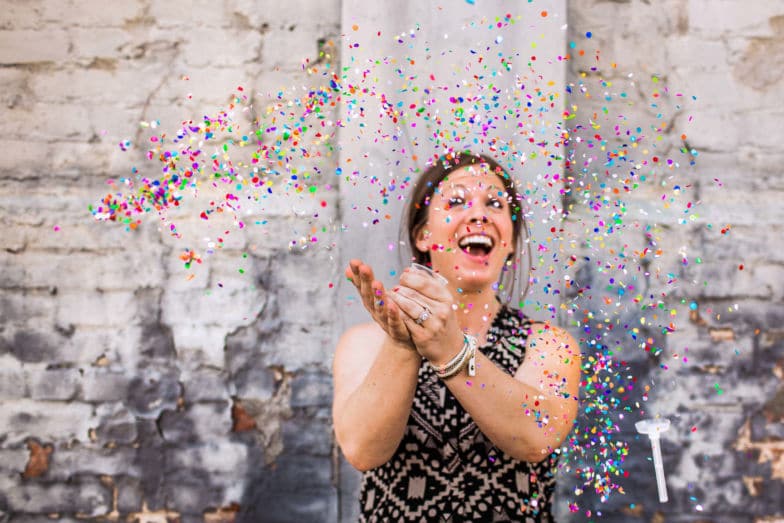
5. Never forget to play, even if that’s not on the shot list
One of my biggest inspirations, Brinson Banks, said it best when they were explaining what it’s like to photograph celebrities for big, national publications. They talked through how they mentally breakdown the typical 5-minute shoots with a high-profile person who has a schedule to keep. The first three minutes is all about nailing the shot the publication or outlet is expecting them to deliver. The other two minutes, they let creativity take control and have fun. They make sure they crushed their shot list, and then make time for play.
I look back on this example often in how I like to approach shoots at Flywheel, as I find myself in similar constraints. As I’ve stated before, our models are employees at Flywheel. They have code to write, products to sell, customers to support, and people to hire. So, when scheduling the shoot on the calendar, I like to budget a comfortable amount of time with the Flywheeler(s) to be efficient, but not rush. Then, I’ll take whatever bonus time is left at the end to choose a different perspective or try something new!
And friends, I tell you that the images in those last five minutes of a shoot land themselves as the final products more often than not. Give yourself time to play, even if it’s not included on the shot list.
6. Learning by doing
I don’t have many peers like me (especially in the WordPress hosting space), and if you’re a photographer, I’m sure you can relate to this. So, one might suggest that I live by the old cliche of “fake it ‘til you make it.” Well, I prefer a remix to that statement, and lean more towards “act like you’ve been there.” As I’ve gained more confidence and overall experience as a photographer in this industry, I’ve learned both by doing (and learning the hard way sometimes) and not being afraid to ask for help.
Before coming to Flywheel, I had never shot in a proper studio before, let alone use strobe or artificial lighting to make a scene come to life. Sounds simple, but there’s an art to it! The longer I’ve been here, the more I’ve been forced to learn through practice and failure in the studio (and now I have a new tool in my photography toolbelt because of it)!
In the end, I lean into discomfort daily, I jokingly (but very seriously) start sweating every time I pick up my camera because that means it’s “go time,” and know that the moment won’t capture itself.
7. Teamwork makes the creative dreams work
I’m thankful Flywheel takes the stance on “developing talent,” because development, practice, and honestly a chance is what I needed when I first set my eyes on being a photographer. I had never shot in a studio and I had never taken a single marketing course, but thanks to my teammates and mentors at Flywheel, I’ve grown in ways I didn’t even know were possible.
It’s no surprise that Flywheel is full of the best of the best. And yeah, that can be intimidating when you’re first starting out and getting your bearings as a creative. But, to be surrounded by passionate, hard-working, and inspiring people makes a photographer’s job seem less intimidating and unbelievably rewarding. I cannot thank the Flywheel team enough for setting an incredible example of how to do your best work, and do it together. I implore you to find a company that cares, not only about design, but about you and your growth in whatever creative field you’re in.
Best seat in the house
It’s important to me that Flywheel continues to be intentional with photography and to use it as a communication tool to not only help every Flywheeler (and potential Flywheeler) sees themselves here, but to help our customers recognize and relate to the humans behind the products they use every single day.
I get to meet every insanely talented and passionate person that is hired at Flywheel. I get to be front-row for some of the biggest moments while documenting an undeniably unique story of a hosting company changing the way creatives do their best work. I get to work from a brand guide that includes the colors of the rainbow, a recurring interest in using toys as conceptual props to describe products and features, and I’m endlessly encouraged to embrace the impact of whimsy. I wouldn’t trade it. In fact, I believe that countless other tech companies and startups would benefit from hiring an in-house photographer. There’s something special about getting to be behind-the-scenes for every small victory and moment of growth, while also being there to help broadcast all of its biggest innovations.
What started as me interviewing for an internship I stumbled across in a college memo four years ago turned into becoming the in-house photographer at one of the fastest growing companies in the country. It has been and continues to be a whirlwind of learning, flying by the seat of my pants, failing a lot, thinking quickly on my feet, learning from my coworkers, digging deep into my interpersonal skills and extroverted nature, and figuring out how to humanize a global tech company that is typically moving at the speed of a rocket ship. But, I’ve got to say, the view is great and I don’t mind the speed one bit.
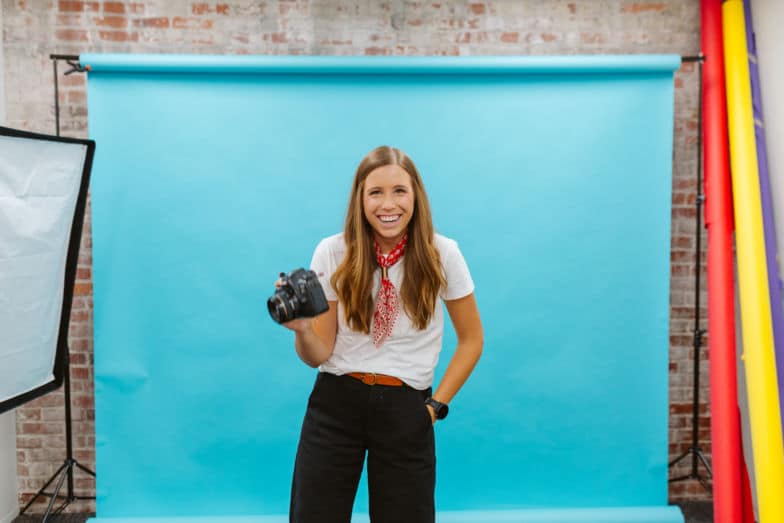

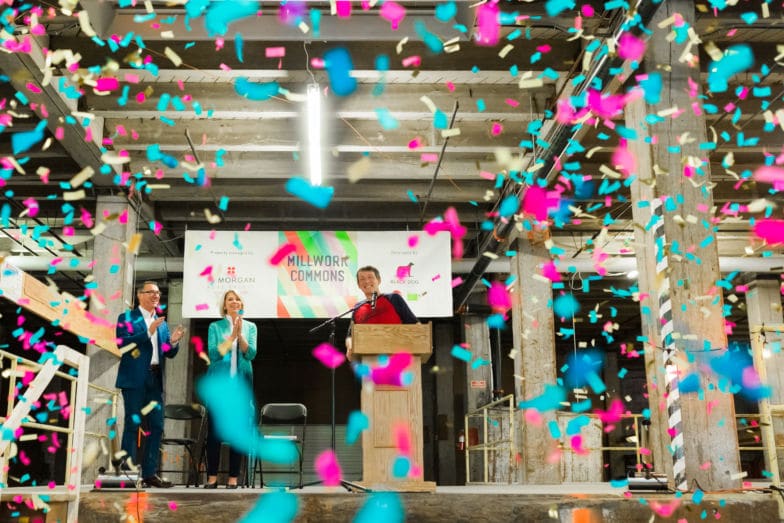

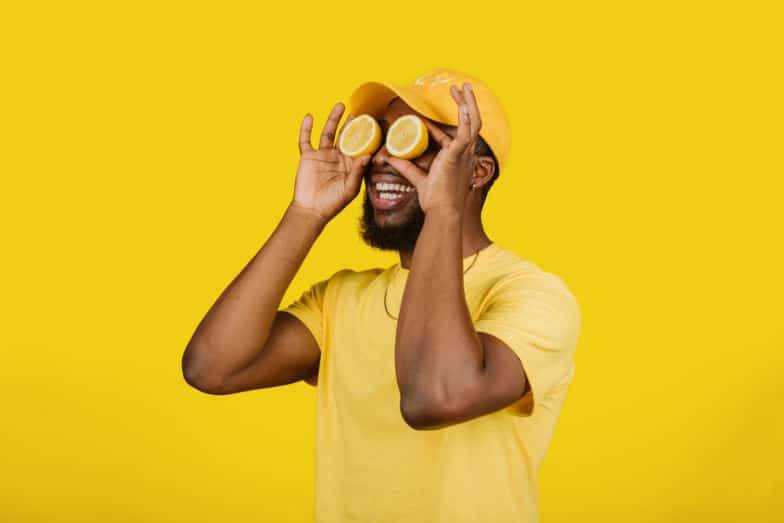
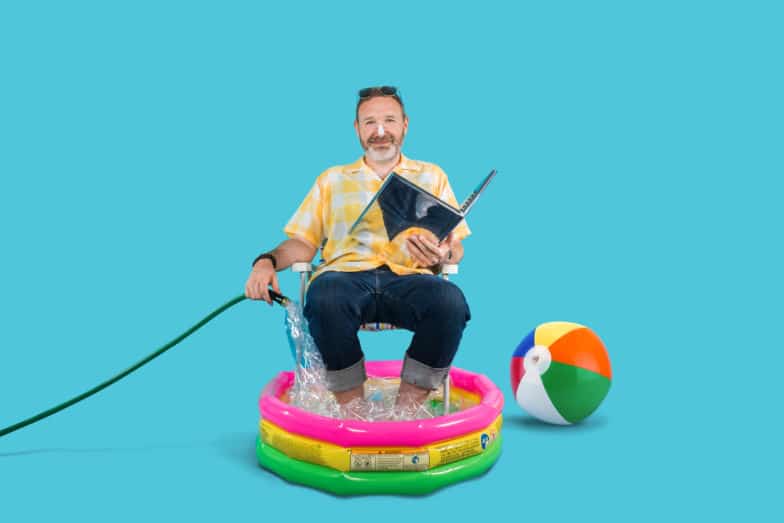
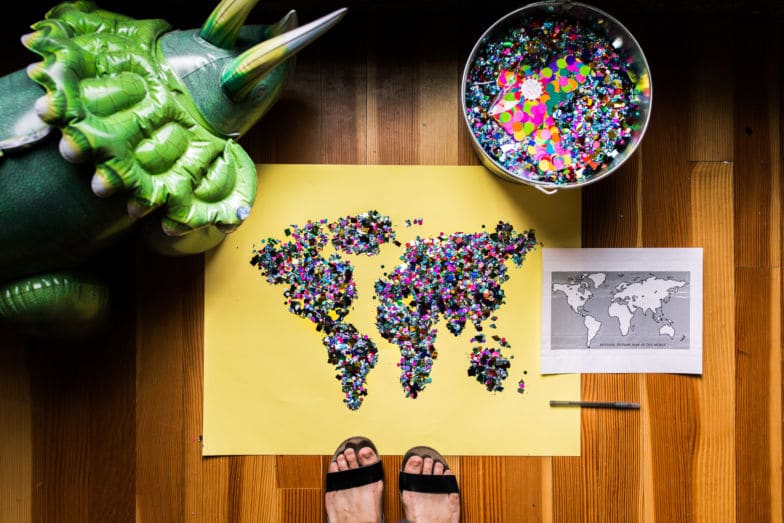

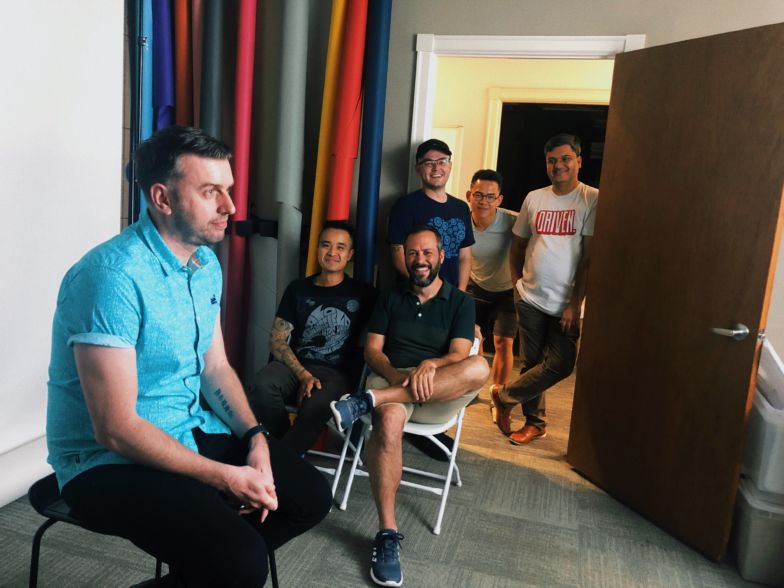
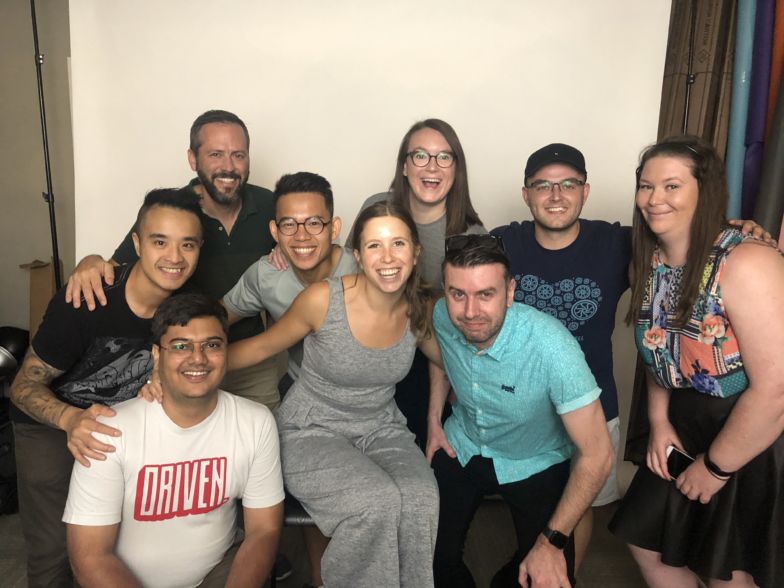

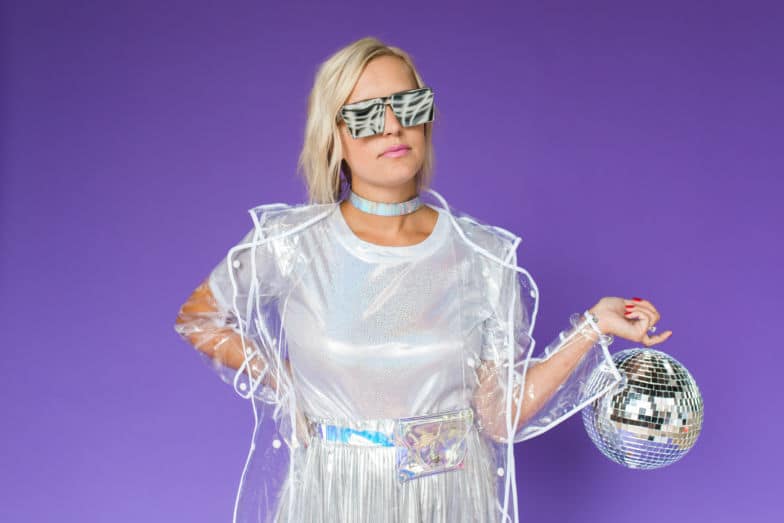
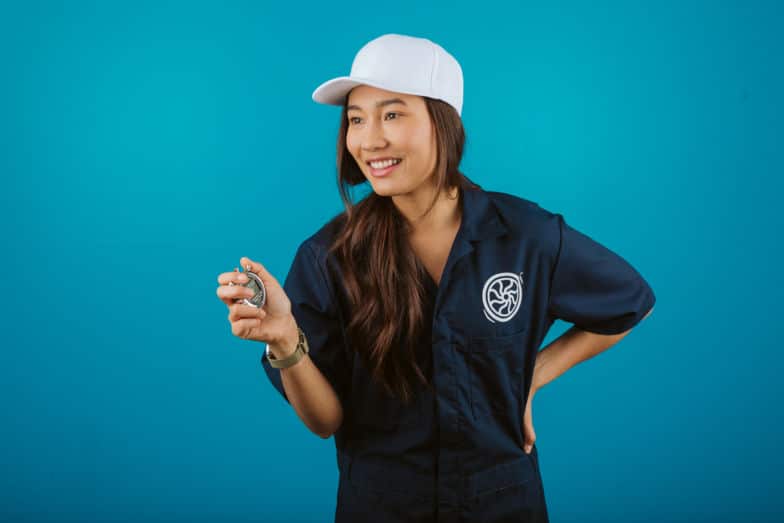

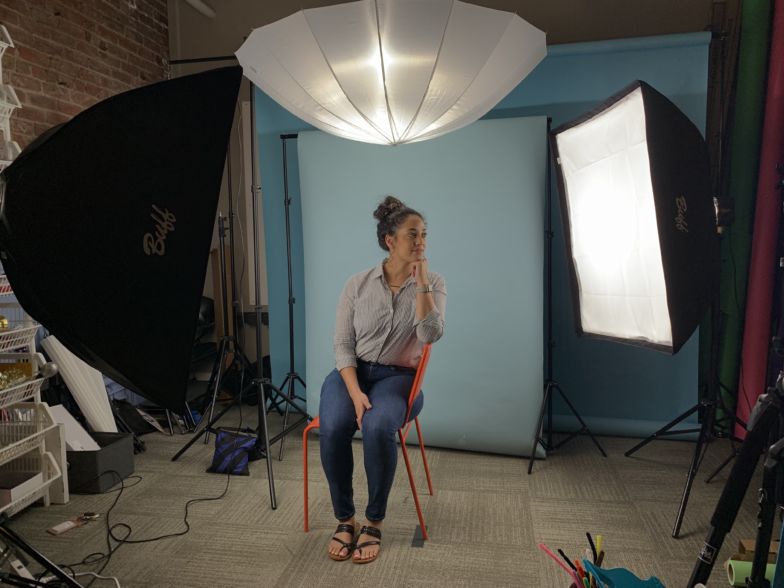

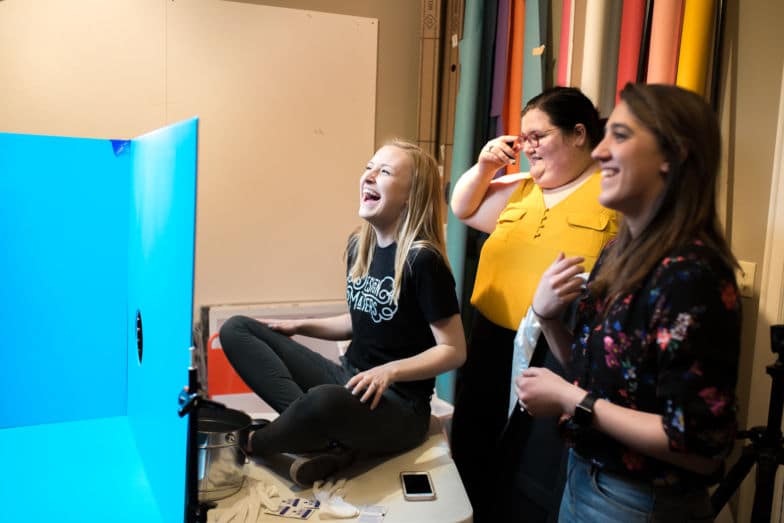
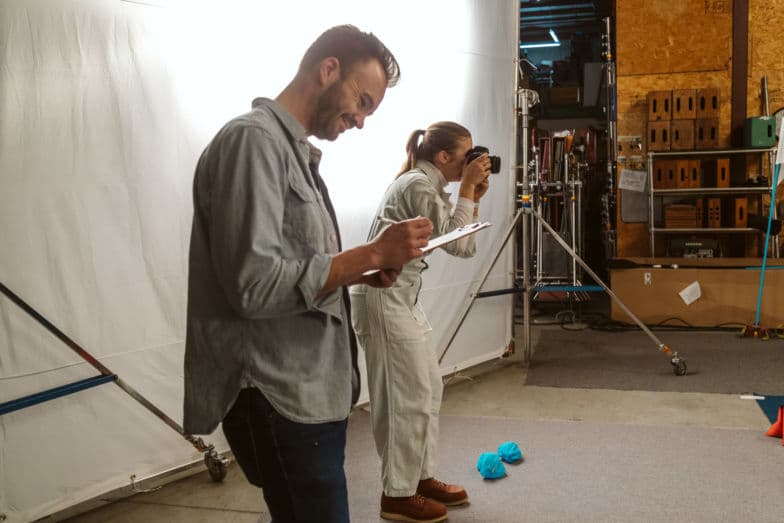

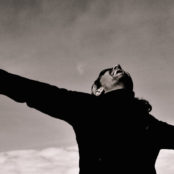




Comments ( 303 )
Josephner
May 29, 2025
Ero Pharm Fast: Ero Pharm Fast - Ero Pharm Fast
Josephner
May 28, 2025
Discount pharmacy Australia: Buy medicine online Australia - Pharm Au24
Rodneysog
May 28, 2025
buy antibiotics over the counter [url=https://biotpharm.com/#]buy antibiotics online[/url] buy antibiotics for uti
Josephner
May 28, 2025
buy antibiotics for uti: buy antibiotics online - buy antibiotics
Josephner
May 28, 2025
Ero Pharm Fast: affordable ed medication - Ero Pharm Fast
Davidunlor
May 28, 2025
https://biotpharm.com/# buy antibiotics from canada
Josephner
May 28, 2025
where can i get ed pills: Ero Pharm Fast - ed online prescription
CurtisAdurl
May 27, 2025
antibiotic without presription: buy antibiotics online - cheapest antibiotics
Josephner
May 27, 2025
Licensed online pharmacy AU: Online drugstore Australia - Licensed online pharmacy AU
Rodneysog
May 27, 2025
Ero Pharm Fast [url=http://eropharmfast.com/#]order ed pills online[/url] pills for erectile dysfunction online
Josephner
May 27, 2025
get antibiotics without seeing a doctor: BiotPharm - antibiotic without presription
Rodneysog
May 27, 2025
PharmAu24 [url=https://pharmau24.com/#]pharmacy online australia[/url] online pharmacy australia
CurtisAdurl
May 27, 2025
Pharm Au24: PharmAu24 - Discount pharmacy Australia
Davidunlor
May 27, 2025
http://pharmau24.com/# Pharm Au 24
Josephner
May 27, 2025
Ero Pharm Fast: Ero Pharm Fast - erectile dysfunction online
Charlesmub
May 27, 2025
best online doctor for antibiotics: buy antibiotics online uk - cheapest antibiotics
JosephTes
May 24, 2025
tadalafil generic 20 mg ebay [url=https://tadalaccess.com/#]Tadal Access[/url] cialis super active plus reviews
JosephTes
May 23, 2025
tadalafil 5 mg tablet [url=https://tadalaccess.com/#]buying cialis online safe[/url] when will cialis be over the counter
Lorenhag
May 23, 2025
cialis manufacturer coupon: tadacip tadalafil - cialis lower blood pressure
FrankieLar
May 23, 2025
https://tadalaccess.com/# cialis one a day with dapoxetine canada
Lorenhag
May 23, 2025
is cialis a controlled substance: cialis manufacturer coupon - sunrise remedies tadalafil
JosephTes
May 23, 2025
cialis medicare [url=https://tadalaccess.com/#]Tadal Access[/url] evolution peptides tadalafil
JosephTes
May 23, 2025
buy cialis in toronto [url=https://tadalaccess.com/#]Tadal Access[/url] cialis canada
FrankieLar
May 23, 2025
https://tadalaccess.com/# cialis 50mg
JosephTes
May 23, 2025
us cialis online pharmacy [url=https://tadalaccess.com/#]cialis generic 20 mg 30 pills[/url] where to buy cialis
Lorenhag
May 23, 2025
cialis soft tabs: TadalAccess - usa peptides tadalafil
JosephTes
May 23, 2025
cialis how long [url=https://tadalaccess.com/#]TadalAccess[/url] cialis definition
FrankieLar
May 22, 2025
https://tadalaccess.com/# comprar tadalafil 40 mg en walmart sin receta houston texas
JosephTes
May 22, 2025
what does cialis look like [url=https://tadalaccess.com/#]TadalAccess[/url] buy cialis in toronto
FrankieLar
May 22, 2025
https://tadalaccess.com/# what does generic cialis look like
JosephTes
May 22, 2025
buy cialis overnight shipping [url=https://tadalaccess.com/#]Tadal Access[/url] cialis 5mg best price
Lorenhag
May 22, 2025
max dosage of cialis: cialis 5mg coupon - order cialis no prescription
FrankieLar
May 22, 2025
https://tadalaccess.com/# buying generic cialis
Lorenhag
May 22, 2025
cialis buy online: Tadal Access - tadalafil generic usa
JosephTes
May 22, 2025
what does cialis cost [url=https://tadalaccess.com/#]TadalAccess[/url] cialis 20mg tablets
FrankieLar
May 22, 2025
https://tadalaccess.com/# what does cialis look like
JosephTes
May 21, 2025
cialis directions [url=https://tadalaccess.com/#]order cialis online cheap generic[/url] canadian cialis online
Lorenhag
May 21, 2025
active ingredient in cialis: TadalAccess - difference between sildenafil and tadalafil
Scottdroca
May 21, 2025
buying generic cialis online safe: cialis same as tadalafil - cialis and blood pressure
FrankieLar
May 21, 2025
https://tadalaccess.com/# snorting cialis
JosephTes
May 21, 2025
cialis canada prices [url=https://tadalaccess.com/#]TadalAccess[/url] cialis manufacturer coupon lilly
FrankieLar
May 21, 2025
https://tadalaccess.com/# cialis headache
Lorenhag
May 21, 2025
cialis with dapoxetine 60mg: Tadal Access - cialis for sale brand
JosephTes
May 21, 2025
cialis pills [url=https://tadalaccess.com/#]Tadal Access[/url] difference between cialis and tadalafil
Lorenhag
May 21, 2025
maxim peptide tadalafil citrate: tadalafil generic reviews - canadian cialis no prescription
Scottdroca
May 21, 2025
canadian online pharmacy cialis: Tadal Access - cialis side effect
JosephTes
May 21, 2025
generic tadalafil prices [url=https://tadalaccess.com/#]Tadal Access[/url] cialis tadalafil cheapest online
FrankieLar
May 20, 2025
https://tadalaccess.com/# cialis pill
JosephTes
May 20, 2025
when will generic cialis be available [url=https://tadalaccess.com/#]Tadal Access[/url] cialis 5mg daily
FrankieLar
May 20, 2025
https://tadalaccess.com/# buy cialis 20mg
Lorenhag
May 20, 2025
cialis sell: TadalAccess - buy cialis online reddit
Scottdroca
May 20, 2025
oryginal cialis: cialis mexico - pastillas cialis
JosephTes
May 20, 2025
can tadalafil cure erectile dysfunction [url=https://tadalaccess.com/#]TadalAccess[/url] cialis manufacturer coupon
Lorenhag
May 20, 2025
how much is cialis without insurance: Tadal Access - cialis bestellen deutschland
JosephTes
May 20, 2025
canada cialis for sale [url=https://tadalaccess.com/#]TadalAccess[/url] cialis com free sample
FrankieLar
May 20, 2025
https://tadalaccess.com/# cialis sample pack
Lorenhag
May 20, 2025
sunrise remedies tadalafil: us cialis online pharmacy - cialis tadalafil cheapest online
JosephTes
May 20, 2025
buy cialis usa [url=https://tadalaccess.com/#]cialis and cocaine[/url] do you need a prescription for cialis
FrankieLar
May 19, 2025
https://tadalaccess.com/# sunrise remedies tadalafil
Lorenhag
May 19, 2025
cialis online no prescription: TadalAccess - cialis contraindications
JosephTes
May 19, 2025
is cialis a controlled substance [url=https://tadalaccess.com/#]TadalAccess[/url] walgreen cialis price
FrankieLar
May 19, 2025
https://tadalaccess.com/# cialis one a day with dapoxetine canada
Lorenhag
May 19, 2025
tadalafil generic in usa: Tadal Access - cheap cialis with dapoxetine
Scottdroca
May 19, 2025
cialis from india online pharmacy: cialis over the counter usa - tadalafil versus cialis
JosephTes
May 19, 2025
purchase generic cialis [url=https://tadalaccess.com/#]Tadal Access[/url] cialis alternative over the counter
Lorenhag
May 19, 2025
canadian pharmacy tadalafil 20mg: buying cialis online safely - cialis how to use
FrankieLar
May 19, 2025
https://tadalaccess.com/# tadalafil eli lilly
Scottdroca
May 19, 2025
what is the difference between cialis and tadalafil: cialis same as tadalafil - how long does cialis take to work
Lorenhag
May 19, 2025
how long does cialis take to work: prescription free cialis - how to buy tadalafil
FrankieLar
May 19, 2025
https://tadalaccess.com/# original cialis online
JosephTes
May 19, 2025
cheap tadalafil 10mg [url=https://tadalaccess.com/#]TadalAccess[/url] sunrise remedies tadalafil
Lorenhag
May 19, 2025
cialis none prescription: TadalAccess - how much does cialis cost per pill
FrankieLar
May 19, 2025
https://tadalaccess.com/# sanofi cialis
JosephTes
May 18, 2025
cialis generic purchase [url=https://tadalaccess.com/#]cialis time[/url] buy cialis online overnight delivery
Scottdroca
May 18, 2025
buy cialis toronto: cialis trial pack - cialis coupon rite aid
Lorenhag
May 18, 2025
cialis 5 mg: Tadal Access - cialis for bph reviews
FrankieLar
May 18, 2025
https://tadalaccess.com/# when is the best time to take cialis
Scottdroca
May 18, 2025
difference between tadalafil and sildenafil: cialis online reviews - what are the side effects of cialis
Lorenhag
May 18, 2025
what is the cost of cialis: generic cialis tadalafil 20mg reviews - canada cialis for sale
FrankieLar
May 18, 2025
https://tadalaccess.com/# brand cialis australia
JosephTes
May 18, 2025
sildenafil vs tadalafil which is better [url=https://tadalaccess.com/#]nebenwirkungen tadalafil[/url] cialis pills online
Lorenhag
May 18, 2025
how to get cialis for free: what is tadalafil made from - cheap cialis with dapoxetine
FrankieLar
May 18, 2025
https://tadalaccess.com/# taking cialis
JosephTes
May 18, 2025
tadalafil online paypal [url=https://tadalaccess.com/#]TadalAccess[/url] cialis online canada ripoff
Lorenhag
May 18, 2025
cialis sample: cialis timing - cialis 40 mg reviews
Scottdroca
May 18, 2025
what does cialis treat: Tadal Access - tadalafil (exilar-sava healthcare) [generic version of cialis] (rx) lowest price
FrankieLar
May 18, 2025
https://tadalaccess.com/# buy cialis online canada
JosephTes
May 17, 2025
is tadalafil as effective as cialis [url=https://tadalaccess.com/#]TadalAccess[/url] cialis san diego
Lorenhag
May 17, 2025
great white peptides tadalafil: cialis 20 mg from united kingdom - cialis side effects a wife’s perspective
Scottdroca
May 17, 2025
cialis super active: Tadal Access - cialis 5mg best price
JosephTes
May 17, 2025
cialis pricing [url=https://tadalaccess.com/#]Tadal Access[/url] cialis free
Lorenhag
May 17, 2025
cialis tubs: TadalAccess - tadalafil tablets 40 mg
FrankieLar
May 17, 2025
https://tadalaccess.com/# cialis 40 mg reviews
Scottdroca
May 17, 2025
where to get free samples of cialis: walmart cialis price - cialis effect on blood pressure
JosephTes
May 17, 2025
cialis no prescription [url=https://tadalaccess.com/#]prescription for cialis[/url] tadalafil (tadalis-ajanta) reviews
FrankieLar
May 17, 2025
https://tadalaccess.com/# what does a cialis pill look like
Scottdroca
May 17, 2025
cialis free trial phone number: buy liquid tadalafil online - cialis with out a prescription
Lorenhag
May 17, 2025
tadalafil cheapest price: canada cialis - whats cialis
JosephTes
May 17, 2025
benefits of tadalafil over sidenafil [url=https://tadalaccess.com/#]Tadal Access[/url] find tadalafil
FrankieLar
May 17, 2025
https://tadalaccess.com/# cialis and melanoma
Lorenhag
May 16, 2025
cialis coupon 2019: prices on cialis - buy cialis united states
FrankieLar
May 16, 2025
https://tadalaccess.com/# canada cialis generic
JosephTes
May 16, 2025
best reviewed tadalafil site [url=https://tadalaccess.com/#]TadalAccess[/url] cialis leg pain
Scottdroca
May 16, 2025
cialis australia online shopping: cialis precio - purchase brand cialis
Lorenhag
May 16, 2025
cialis dapoxetine europe: tadalafil generic usa - poppers and cialis
FrankieLar
May 16, 2025
https://tadalaccess.com/# tadalafil generic reviews
Lorenhag
May 16, 2025
canada drugs cialis: Tadal Access - cialis canadian pharmacy
Scottdroca
May 16, 2025
tadalafil cheapest price: cialis before and after - cialis genetic
FrankieLar
May 16, 2025
https://tadalaccess.com/# cialis what age
JosephTes
May 16, 2025
does cialis raise blood pressure [url=https://tadalaccess.com/#]Tadal Access[/url] cialis daily vs regular cialis
Lorenhag
May 16, 2025
cialis black in australia: cialis com coupons - side effects of cialis daily
FrankieLar
May 16, 2025
https://tadalaccess.com/# cialis free trial voucher
Lorenhag
May 16, 2025
is tadalafil as effective as cialis: cialis logo - were can i buy cialis
Scottdroca
May 15, 2025
cialis free trial coupon: Tadal Access - where to buy cialis
FrankieLar
May 15, 2025
https://tadalaccess.com/# tadalafil 20mg
Lorenhag
May 15, 2025
benefits of tadalafil over sidenafil: order cialis no prescription - cialis professional vs cialis super active
FrankieLar
May 15, 2025
https://tadalaccess.com/# why is cialis so expensive
Scottdroca
May 15, 2025
cialis cheapest prices: TadalAccess - purchase cialis
JosephTes
May 15, 2025
cialis or levitra [url=https://tadalaccess.com/#]TadalAccess[/url] side effects of cialis tadalafil
FrankieLar
May 15, 2025
https://tadalaccess.com/# cialis dosage 20mg
Scottdroca
May 15, 2025
stendra vs cialis: cialis free trial voucher - tadalafil vs sildenafil
Lorenhag
May 15, 2025
over the counter cialis: does cialis shrink the prostate - is generic cialis available in canada
JosephTes
May 15, 2025
how to buy cialis [url=https://tadalaccess.com/#]Tadal Access[/url] viagara cialis levitra
FrankieLar
May 15, 2025
https://tadalaccess.com/# price of cialis
Scottdroca
May 15, 2025
price of cialis in pakistan: TadalAccess - printable cialis coupon
Lorenhag
May 15, 2025
cialis medicine: sildenafil vs cialis - cialis 20mg price
JosephTes
May 15, 2025
cialis 5mg coupon [url=https://tadalaccess.com/#]cialis walgreens[/url] cialis directions
FrankieLar
May 14, 2025
https://tadalaccess.com/# cialis shipped from usa
Scottdroca
May 14, 2025
where can i buy cialis over the counter: cialis for sale brand - cialis premature ejaculation
Lorenhag
May 14, 2025
para que sirve las tabletas cialis tadalafil de 5mg: TadalAccess - best place to buy generic cialis online
JosephTes
May 14, 2025
cialis generic best price that accepts mastercard [url=https://tadalaccess.com/#]Tadal Access[/url] cialis instructions
FrankieLar
May 14, 2025
https://tadalaccess.com/# cialis tadalafil 20mg price
Scottdroca
May 14, 2025
does cialis raise blood pressure: cialis for sale online - buying cialis online
Lorenhag
May 14, 2025
generic tadalafil 40 mg: tadalafil generic in usa - cialis free trial coupon
FrankieLar
May 14, 2025
https://tadalaccess.com/# active ingredient in cialis
JosephTes
May 14, 2025
tadalafil review forum [url=https://tadalaccess.com/#]tadalafil 10mg side effects[/url] cialis not working first time
finasteride medications list
May 14, 2025
hair transplant without propecia com 20 E2 AD 90 20Viagra 20For 20Sale 20 20Cat 20Costa 20O 20Pastila 20De 20Viagra cat costa o pastila de viagra Cuban, 55, estimated by Forbes magazine to have a net worth of 2
Scottdroca
May 14, 2025
cipla tadalafil review: tadalafil from nootropic review - tadalafil and voice problems
Lorenhag
May 14, 2025
cheap cialis with dapoxetine: cialis patient assistance - cialis sell
FrankieLar
May 14, 2025
https://tadalaccess.com/# generic cialis
JosephTes
May 14, 2025
tadalafil without a doctor prescription [url=https://tadalaccess.com/#]TadalAccess[/url] cialis 5mg price walmart
Lorenhag
May 14, 2025
canada cialis: cialis price per pill - what is the active ingredient in cialis
FrankieLar
May 14, 2025
https://tadalaccess.com/# find tadalafil
MatthewTom
May 14, 2025
buy amoxicillin online without prescription [url=https://amohealthcare.store/#]Amo Health Care[/url] buy amoxicillin online cheap
Oscargef
May 13, 2025
buying generic clomid prices: how can i get generic clomid - buying generic clomid without prescription
Russellfeeve
May 13, 2025
PredniHealth: PredniHealth - PredniHealth
RogerCouct
May 13, 2025
http://prednihealth.com/# PredniHealth
MatthewTom
May 13, 2025
can you get generic clomid pills [url=http://clomhealth.com/#]Clom Health[/url] can i get generic clomid pill
Russellfeeve
May 13, 2025
prednisone medication: PredniHealth - PredniHealth
RogerCouct
May 13, 2025
http://prednihealth.com/# PredniHealth
MatthewTom
May 13, 2025
PredniHealth [url=https://prednihealth.shop/#]PredniHealth[/url] PredniHealth
Russellfeeve
May 13, 2025
order amoxicillin 500mg: amoxicillin without a prescription - generic amoxicillin online
RogerCouct
May 13, 2025
https://prednihealth.shop/# PredniHealth
MatthewTom
May 13, 2025
PredniHealth [url=https://prednihealth.com/#]PredniHealth[/url] PredniHealth
JudsonZoown
May 13, 2025
order prednisone on line: PredniHealth - buy prednisone tablets uk
Russellfeeve
May 13, 2025
amoxicillin no prescipion: Amo Health Care - order amoxicillin uk
Oscargef
May 12, 2025
prednisone 2.5 mg tab: prednisone online paypal - PredniHealth
MatthewTom
May 12, 2025
Amo Health Care [url=https://amohealthcare.store/#]amoxicillin canada price[/url] Amo Health Care
JudsonZoown
May 12, 2025
Amo Health Care: Amo Health Care - where can i get amoxicillin 500 mg
Russellfeeve
May 12, 2025
Amo Health Care: Amo Health Care - how to buy amoxycillin
RogerCouct
May 12, 2025
https://clomhealth.shop/# cheap clomid without a prescription
JudsonZoown
May 12, 2025
buy prednisone online uk: PredniHealth - prednisone brand name in india
MatthewTom
May 12, 2025
Amo Health Care [url=https://amohealthcare.store/#]Amo Health Care[/url] can you purchase amoxicillin online
Russellfeeve
May 12, 2025
PredniHealth: PredniHealth - generic prednisone for sale
RogerCouct
May 12, 2025
http://clomhealth.com/# where can i get generic clomid without a prescription
Oscargef
May 12, 2025
where to get generic clomid price: Clom Health - cost of cheap clomid tablets
JudsonZoown
May 12, 2025
prednisone 20 mg generic: PredniHealth - prednisone capsules
MatthewTom
May 12, 2025
amoxicillin 500mg capsules antibiotic [url=https://amohealthcare.store/#]amoxicillin 500mg capsules uk[/url] Amo Health Care
Russellfeeve
May 12, 2025
PredniHealth: prednisone pills 10 mg - PredniHealth
RogerCouct
May 12, 2025
https://amohealthcare.store/# amoxicillin 500 mg capsule
Oscargef
May 12, 2025
prednisone capsules: generic prednisone online - prednisone for sale no prescription
JudsonZoown
May 12, 2025
amoxicillin 500 mg price: Amo Health Care - amoxicillin 500 mg brand name
Russellfeeve
May 12, 2025
Amo Health Care: can you buy amoxicillin over the counter canada - buy amoxicillin over the counter uk
Albertoseino
May 11, 2025
discreet shipping ED pills: order Cialis online no prescription - cheap Cialis online
Jeremyfax
May 11, 2025
generic sildenafil 100mg: order Viagra discreetly - same-day Viagra shipping
RonaldFOEFS
May 11, 2025
https://maxviagramd.shop/# no doctor visit required
Albertoseino
May 10, 2025
fast Viagra delivery: trusted Viagra suppliers - no doctor visit required
LorenzoBlize
May 10, 2025
online Cialis pharmacy [url=https://zipgenericmd.shop/#]FDA approved generic Cialis[/url] reliable online pharmacy Cialis
Albertoseino
May 10, 2025
discreet shipping ED pills: generic tadalafil - buy generic Cialis online
LorenzoBlize
May 10, 2025
modafinil legality [url=https://modafinilmd.store/#]modafinil pharmacy[/url] verified Modafinil vendors
RonaldFOEFS
May 10, 2025
http://maxviagramd.com/# best price for Viagra
Jeremyfax
May 10, 2025
order Cialis online no prescription: order Cialis online no prescription - FDA approved generic Cialis
Albertoseino
May 10, 2025
modafinil 2025: verified Modafinil vendors - modafinil 2025
RonaldFOEFS
May 10, 2025
https://zipgenericmd.com/# order Cialis online no prescription
RobertKet
May 10, 2025
cheap Viagra online: safe online pharmacy - buy generic Viagra online
Albertoseino
May 10, 2025
affordable ED medication: Cialis without prescription - FDA approved generic Cialis
Jeremyfax
May 10, 2025
fast Viagra delivery: buy generic Viagra online - buy generic Viagra online
Albertoseino
May 10, 2025
fast Viagra delivery: generic sildenafil 100mg - generic sildenafil 100mg
Jeremyfax
May 10, 2025
discreet shipping ED pills: generic tadalafil - secure checkout ED drugs
RobertKet
May 9, 2025
doctor-reviewed advice: modafinil legality - doctor-reviewed advice
Albertoseino
May 9, 2025
safe online pharmacy: buy generic Viagra online - fast Viagra delivery
RonaldFOEFS
May 9, 2025
https://maxviagramd.shop/# best price for Viagra
Albertoseino
May 9, 2025
safe modafinil purchase: doctor-reviewed advice - modafinil 2025
RonaldFOEFS
May 9, 2025
http://maxviagramd.com/# discreet shipping
RobertKet
May 9, 2025
safe modafinil purchase: modafinil legality - Modafinil for sale
Albertoseino
May 9, 2025
trusted Viagra suppliers: fast Viagra delivery - generic sildenafil 100mg
LorenzoBlize
May 9, 2025
no doctor visit required [url=https://maxviagramd.com/#]order Viagra discreetly[/url] no doctor visit required
Jeremyfax
May 9, 2025
doctor-reviewed advice: doctor-reviewed advice - modafinil legality
RonaldFOEFS
May 9, 2025
https://maxviagramd.com/# best price for Viagra
RobertKet
May 9, 2025
safe modafinil purchase: purchase Modafinil without prescription - safe modafinil purchase
LorenzoBlize
May 9, 2025
safe modafinil purchase [url=https://modafinilmd.store/#]legal Modafinil purchase[/url] safe modafinil purchase
Richardmat
May 7, 2025
вавада официальный сайт [url=https://vavadavhod.tech/#]vavada casino[/url] вавада официальный сайт
ZackaryCaush
May 6, 2025
http://pinupaz.top/# pin up
Richardmat
May 6, 2025
pin up [url=https://pinupaz.top/#]pin up casino[/url] pin-up casino giris
Richardmat
May 5, 2025
вавада зеркало [url=https://vavadavhod.tech/#]вавада официальный сайт[/url] vavada casino
Richardmat
May 4, 2025
вавада зеркало [url=http://vavadavhod.tech/#]vavada[/url] vavada вход
ZackaryCaush
May 4, 2025
http://vavadavhod.tech/# vavada casino
ZackaryCaush
May 3, 2025
http://vavadavhod.tech/# вавада зеркало
ZackaryCaush
May 3, 2025
https://pinuprus.pro/# пин ап зеркало
Richardmat
May 2, 2025
пин ап казино [url=http://pinuprus.pro/#]pin up вход[/url] пинап казино
ZackaryCaush
May 2, 2025
http://pinuprus.pro/# пинап казино
Richardmat
May 2, 2025
вавада [url=http://vavadavhod.tech/#]вавада зеркало[/url] вавада официальный сайт
Richardmat
May 2, 2025
пин ап зеркало [url=https://pinuprus.pro/#]пин ап казино официальный сайт[/url] пин ап казино официальный сайт
ZackaryCaush
May 2, 2025
https://pinuprus.pro/# пин ап зеркало
ZackaryCaush
May 1, 2025
https://pinupaz.top/# pin up az
Richardmat
May 1, 2025
пинап казино [url=http://pinuprus.pro/#]пин ап вход[/url] pin up вход
ZackaryCaush
May 1, 2025
https://pinupaz.top/# pin up casino
Kennethsheby
May 1, 2025
пин ап зеркало: пин ап зеркало - пин ап казино
Richardmat
May 1, 2025
pin up casino [url=http://pinupaz.top/#]pin up az[/url] pinup az
Richardmat
May 1, 2025
pinup az [url=http://pinupaz.top/#]pin-up[/url] pin up az
ZackaryCaush
May 1, 2025
http://pinuprus.pro/# пин ап казино официальный сайт
ZackaryCaush
May 1, 2025
http://pinuprus.pro/# пин ап казино
ZackaryCaush
April 30, 2025
https://pinuprus.pro/# пинап казино
Richardmat
April 30, 2025
пин ап зеркало [url=https://pinuprus.pro/#]пин ап вход[/url] pin up вход
ZackaryCaush
April 30, 2025
https://vavadavhod.tech/# vavada вход
Richardmat
April 30, 2025
pin up azerbaycan [url=http://pinupaz.top/#]pin up[/url] pin up azerbaycan
ZackaryCaush
April 30, 2025
http://pinupaz.top/# pinup az
Richardmat
April 30, 2025
pin up [url=https://pinupaz.top/#]pin-up casino giris[/url] pin up
Kennethsheby
April 30, 2025
pin up az: pin-up casino giris - pin-up casino giris
ElmerSip
April 30, 2025
пин ап зеркало: пин ап вход - пин ап вход
ZackaryCaush
April 30, 2025
https://pinuprus.pro/# pin up вход
Kennethsheby
April 30, 2025
пин ап зеркало: pin up вход - pin up вход
Richardmat
April 30, 2025
пинап казино [url=http://pinuprus.pro/#]пин ап казино официальный сайт[/url] пин ап вход
ElmerSip
April 30, 2025
pinup az: pin up - pinup az
ZackaryCaush
April 30, 2025
http://pinupaz.top/# pinup az
Michaeljouch
April 30, 2025
canadian mail order pharmacy [url=https://expressrxcanada.shop/#]Generic drugs from Canada[/url] legitimate canadian pharmacy
Stevendrype
April 30, 2025
Rx Express Mexico: Rx Express Mexico - mexico pharmacies prescription drugs
Dannysit
April 30, 2025
Medicine From India: reputable indian pharmacies - MedicineFromIndia
Walterhap
April 29, 2025
https://medicinefromindia.shop/# MedicineFromIndia
MichaelFaulp
April 29, 2025
indian pharmacy online: MedicineFromIndia - medicine courier from India to USA
Michaeljouch
April 29, 2025
п»їbest mexican online pharmacies [url=https://rxexpressmexico.shop/#]Rx Express Mexico[/url] RxExpressMexico
Dannysit
April 29, 2025
canadian pharmacy meds review: Canadian pharmacy shipping to USA - canadian neighbor pharmacy
Walterhap
April 29, 2025
http://rxexpressmexico.com/# RxExpressMexico
Stevendrype
April 29, 2025
mexico drug stores pharmacies: Rx Express Mexico - mexican rx online
MichaelFaulp
April 29, 2025
my canadian pharmacy: Canadian pharmacy shipping to USA - best canadian pharmacy
Dannysit
April 29, 2025
canadian pharmacy prices: Express Rx Canada - canadian pharmacy king reviews
Walterhap
April 29, 2025
https://medicinefromindia.shop/# MedicineFromIndia
Dannysit
April 29, 2025
maple leaf pharmacy in canada: Express Rx Canada - buying drugs from canada
Stevendrype
April 29, 2025
indian pharmacy: india pharmacy - Medicine From India
Walterhap
April 29, 2025
https://expressrxcanada.com/# canadian pharmacy oxycodone
Michaeljouch
April 29, 2025
canadianpharmacymeds [url=https://expressrxcanada.com/#]Canadian pharmacy shipping to USA[/url] best online canadian pharmacy
Dannysit
April 29, 2025
mexico drug stores pharmacies: mexico drug stores pharmacies - mexico pharmacies prescription drugs
Stevendrype
April 29, 2025
mexico drug stores pharmacies: mexico drug stores pharmacies - Rx Express Mexico
Walterhap
April 29, 2025
http://expressrxcanada.com/# reliable canadian pharmacy
Michaeljouch
April 29, 2025
medicine courier from India to USA [url=https://medicinefromindia.shop/#]Medicine From India[/url] Medicine From India
Dannysit
April 28, 2025
mexican online pharmacy: Rx Express Mexico - mexican rx online
Stevendrype
April 28, 2025
canadapharmacyonline com: Buy medicine from Canada - canadian pharmacy ltd
MichaelFaulp
April 28, 2025
indian pharmacy online: indian pharmacy online - Medicine From India
Walterhap
April 28, 2025
http://rxexpressmexico.com/# Rx Express Mexico
Dannysit
April 28, 2025
Rx Express Mexico: mexican online pharmacy - mexican rx online
Stevendrype
April 28, 2025
medicine courier from India to USA: medicine courier from India to USA - Medicine From India
MichaelFaulp
April 28, 2025
best rated canadian pharmacy: canadianpharmacyworld com - canadian pharmacy no rx needed
Walterhap
April 28, 2025
https://rxexpressmexico.com/# Rx Express Mexico
Michaeljouch
April 28, 2025
mexico pharmacies prescription drugs [url=https://rxexpressmexico.com/#]Rx Express Mexico[/url] mexico pharmacy order online
Dannysit
April 28, 2025
mexico drug stores pharmacies: Rx Express Mexico - mexico pharmacy order online
Stevendrype
April 28, 2025
mexican online pharmacy: buying prescription drugs in mexico - medicine in mexico pharmacies
MichaelFaulp
April 28, 2025
mexico pharmacies prescription drugs: RxExpressMexico - Rx Express Mexico
Walterhap
April 28, 2025
http://medicinefromindia.com/# indian pharmacy
Dannysit
April 28, 2025
online pharmacy canada: Express Rx Canada - reputable canadian pharmacy
Michaeljouch
April 28, 2025
RxExpressMexico [url=https://rxexpressmexico.shop/#]mexican rx online[/url] Rx Express Mexico
PeterUnomb
April 28, 2025
Acheter Kamagra site fiable [url=https://kamagraprix.shop/#]achat kamagra[/url] kamagra livraison 24h
Robertmut
April 27, 2025
https://pharmafst.com/# pharmacie en ligne france livraison belgique
Robertmut
April 27, 2025
http://tadalmed.com/# Cialis generique prix
BernardVeida
April 27, 2025
trouver un mГ©dicament en pharmacie: pharmacie en ligne - trouver un mГ©dicament en pharmacie pharmafst.com
Robertmut
April 27, 2025
https://pharmafst.com/# pharmacie en ligne france livraison internationale
BernardVeida
April 27, 2025
Acheter Viagra Cialis sans ordonnance: Cialis sans ordonnance 24h - cialis prix tadalmed.shop
BilliesniCt
April 27, 2025
kamagra gel: Kamagra Commander maintenant - Kamagra Commander maintenant
Robertmut
April 26, 2025
https://pharmafst.shop/# acheter mГ©dicament en ligne sans ordonnance
BilliesniCt
April 26, 2025
acheter kamagra site fiable: kamagra livraison 24h - Kamagra pharmacie en ligne
Robertmut
April 26, 2025
https://pharmafst.shop/# trouver un mГ©dicament en pharmacie
BilliesniCt
April 26, 2025
Tadalafil 20 mg prix en pharmacie: cialis generique - Tadalafil achat en ligne tadalmed.shop
BilliesniCt
April 26, 2025
Achat Cialis en ligne fiable: cialis prix - Acheter Viagra Cialis sans ordonnance tadalmed.shop
Robertmut
April 26, 2025
https://pharmafst.shop/# pharmacies en ligne certifiГ©es
BernardVeida
April 26, 2025
Pharmacie sans ordonnance: pharmacie en ligne - trouver un mГ©dicament en pharmacie pharmafst.com
BilliesniCt
April 26, 2025
pharmacie en ligne france fiable: Meilleure pharmacie en ligne - pharmacie en ligne sans ordonnance pharmafst.com
BernardVeida
April 26, 2025
Pharmacie sans ordonnance: Meilleure pharmacie en ligne - pharmacie en ligne sans ordonnance pharmafst.com
Robertmut
April 26, 2025
https://kamagraprix.com/# Achetez vos kamagra medicaments
PeterUnomb
April 26, 2025
pharmacie en ligne livraison europe [url=https://pharmafst.com/#]pharmacie en ligne pas cher[/url] pharmacie en ligne france pas cher pharmafst.shop
Bradleyfup
April 25, 2025
Cialis en ligne: Cialis en ligne - Acheter Cialis tadalmed.shop
Robertmut
April 25, 2025
http://tadalmed.com/# Acheter Cialis
PeterUnomb
April 25, 2025
kamagra en ligne [url=http://kamagraprix.com/#]achat kamagra[/url] Kamagra pharmacie en ligne
Bradleyfup
April 25, 2025
Pharmacie sans ordonnance: Pharmacies en ligne certifiees - п»їpharmacie en ligne france pharmafst.com
BilliesniCt
April 25, 2025
Achetez vos kamagra medicaments: kamagra en ligne - kamagra oral jelly
Robertmut
April 25, 2025
https://pharmafst.shop/# vente de mГ©dicament en ligne
PeterUnomb
April 25, 2025
Acheter Viagra Cialis sans ordonnance [url=https://tadalmed.shop/#]Cialis en ligne[/url] cialis prix tadalmed.com
Bradleyfup
April 25, 2025
Cialis generique prix: cialis sans ordonnance - Acheter Cialis tadalmed.shop
BilliesniCt
April 25, 2025
Kamagra pharmacie en ligne: Acheter Kamagra site fiable - achat kamagra
BernardVeida
April 25, 2025
kamagra gel: acheter kamagra site fiable - kamagra gel
Bradleyfup
April 25, 2025
Achetez vos kamagra medicaments: kamagra en ligne - Kamagra Commander maintenant
PeterUnomb
April 25, 2025
acheter kamagra site fiable [url=https://kamagraprix.shop/#]kamagra gel[/url] acheter kamagra site fiable
DavidSaisp
April 24, 2025
kamagra oral jelly: Kamagra Commander maintenant - Kamagra Oral Jelly pas cher
Edwardtoupe
April 23, 2025
olympe casino en ligne: olympe - olympe casino
James G
September 21, 2020
That was great. Thanks for showing us how things work, and a different way for companies to go than stock. Glad it has worked well for you.